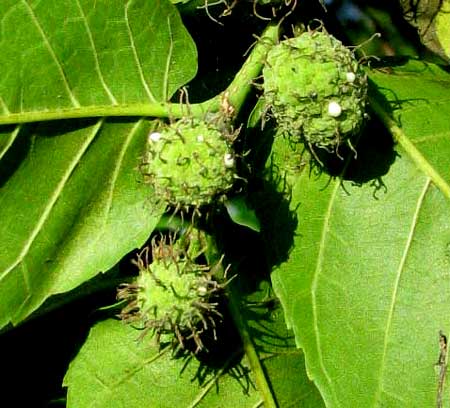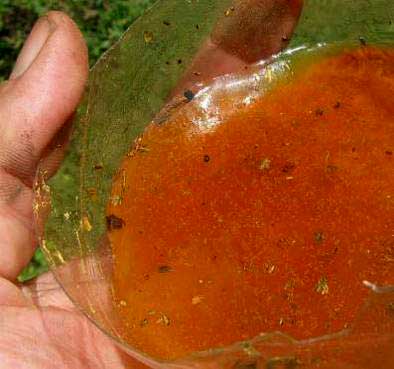
Sometimes out in the woods you come upon a section of trail where the ground is carpeted with long, wormlike yellowish flower clusters like the one shown below:

The tree producing the "worms" -- which are spikelike clusters of male flowers -- is known by everyone as Mora. Mora's female flowers are shown below:

According to every Spanish-English dictionary Mora means "mulberry," but this Mora isn't what Northerners think of as a mulberry.
Moras are Maclura tinctoria. They're members of the Fig Family, so it shouldn't be a surprise that Mora's fruits, despite not being mulberries, are edible -- though not very tasty. Still, at least in the past, Mora trees were very important because a yellow dye can be extracted from their wood. In fact, in the old days sometimes English speakers called Mora "Dyer's Mulberry." During World War I, dye from Mora was used to color khaki fabric for US soldiers.

A while back I came upon a spot where campesinos had felled a Mora to make way for their milpa, or cornfield. I collected some Mora sawdust, soaked it overnight in water in a cut-off bottom of a liter Coke bottle, and above you can see what the water looked like the next morning.
Mora is distributed from southern Mexico south all the way to Argentina.